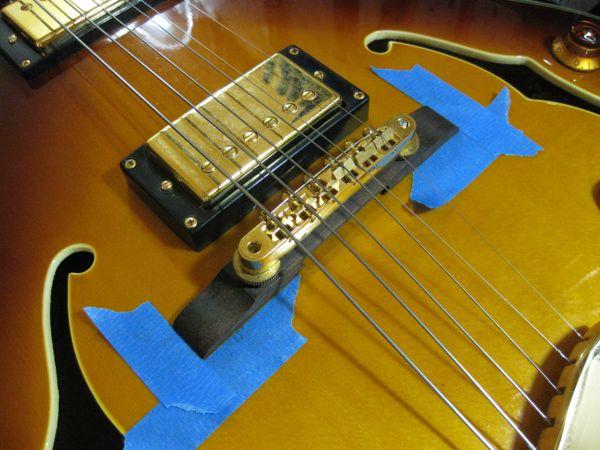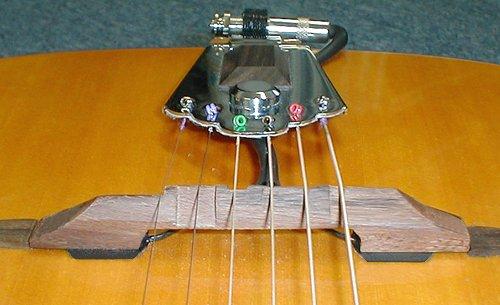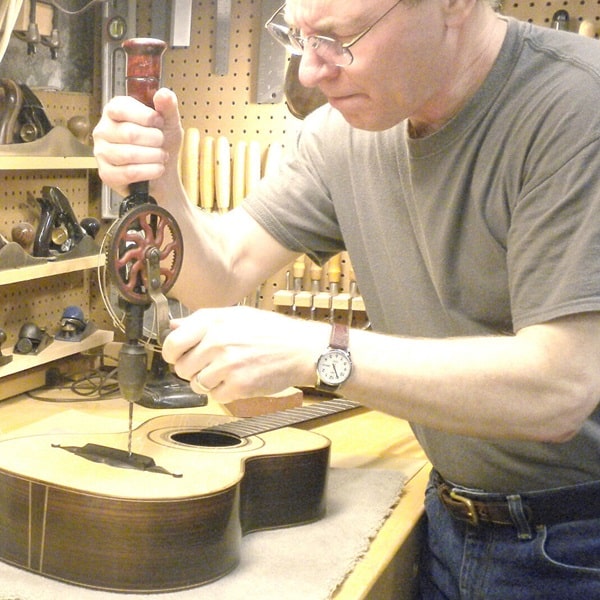Have you ever watched a musician’s fingers dance effortlessly across the strings, only to see the whammy bar glide with a symphonic grace? That’s the magic of a floating bridge, a guitar component that transforms soundscapes and challenges traditional engineering. Yet, what truly lies beneath this seemingly mystical experience? As a former engineer turned luthier, I’ve spent decades entrenched in the nuances of guitar design, witnessing firsthand how the floating bridge marries functionality with aesthetic appeal. This article explores the intricacies of the floating bridge—a remarkable fusion of art and science that elevates guitar performance beyond expectations. Whether you’re a guitarist yearning to master its setup and maintenance or a curious mind eager to unravel its complexities, I invite you to journey with me through the heart of this engineering marvel. Prepare to uncover insights that may very well redefine your perception of guitar bridge types.
What is a Floating Bridge Guitar?

In my exploration of guitar mechanics, I’ve learned that the floating bridge is not just a feature—it’s a gateway to a new range of sound possibilities that every guitarist should appreciate. The floating bridge is a fascinating invention that fundamentally alters the tonal landscape of a guitar. So, what exactly sets a floating bridge apart from traditional guitar bridges? Understanding this distinction opens up myriad opportunities for sonic experimentation and creativity.
A floating bridge, often used in instruments like electric guitars, differs from its traditional counterparts, such as fixed or stationary bridges, in its ability to facilitate a type of motion that is both dynamic and expressive. While traditional bridges are anchored firmly to the body of the guitar, the floating bridge is aptly named for how it “floats” above the guitar’s surface. This allows it to pivot back and forth, manipulated by a tremolo arm, or whammy bar, providing the guitarist an expanded palette of **expressive vibrato and pitch bending elements**.
From my own experiences, mastering a floating bridge can completely transform one’s playing style. Its ability to create subtle pitch variations or dramatic dive bombs introduces a level of versatility that is both challenging and rewarding. The sensitivity and precision required to handle such a piece of hardware highlight not only the engineering marvels of guitar bridge mechanics but also the nuanced physical relationship between the instrument and the player. As guitarists, understanding the floating bridge offers us the keys to innovate and enhance our musical expressions profoundly.
How Does a Floating Bridge Work?

Having worked on various tremolo systems, I can attest that understanding the mechanics behind a floating bridge is essential for every player looking to master their instrument’s potential. Can a simple modification in bridge mechanics redefine your playing experience? Absolutely, and unlocking the unique attributes of a floating bridge might just transform your approach to guitar playing.
A floating bridge—often associated with the Floyd Rose brand—enables the bridge to move freely in both directions, offering enhanced pitch modulation and creative expression. Unlike traditional bridges that stay fixed, the floating bridge is delicately balanced between the guitar’s body and the tension of the strings. The fundamental principle relies on a tremolo system, which employs springs installed in the guitar’s body to counteract string tension and maintain equilibrium. This setup allows you to achieve dramatic vibrato effects, dive bombs, and soaring pitch bends with a mere flick of the whammy bar, all while maintaining bridge stability.
What makes the floating bridge so intriguing is its ability to return to its original position after a rich dive or that signature, fluttering effect. This complex dance of tension and balance invites players to explore their unique musical landscapes without compromising tuning accuracy or intonation.
In the following sections, we’ll delve deeper into why you might choose to forego a fixed bridge in favor of a floating one and explore the intricate art of setting up your guitar to accommodate this engineering marvel.
Why Choose a Floating Bridge?

In my experience as a luthier, I have seen firsthand how the *floating bridge advantages* can elevate a guitarist’s creative expression and technical capabilities. So, what are the true benefits of opting for a floating bridge over a fixed one? This question often emerges from guitarists seeking greater versatility and dynamic range in their performance. A floating bridge offers a nuanced level of control over pitch modulation and whammy techniques that simply aren’t possible with a fixed bridge.
Imagine seamlessly bending whole chords, creating vibratos, or diving into deep pitch bends with ease and accuracy. These capabilities are not just about technique; they transform your playing style, allowing expressive possibilities that can truly distinguish your sound. Floating bridges are the key to achieving that soulful pitch drop or exhilarating climb you’ve always heard in your musical inspirations.
Moreover, from a technical setup perspective, while a floating bridge requires more detailed adjustments, the payoff in tonal flexibility is undeniable. This setup may initially seem daunting, but once mastered, the bridge allows for an individualized playing experience that enhances both personal enjoyment and professional performance. Through my work, I’ve helped many musicians unlock this potential, showing them how a floating bridge can turn carpal challenges into seamless artistry.
When to Use a Floating Bridge?

Is a floating bridge the secret weapon for achieving expressive pitch bends? In my extensive experience, this dynamic component has proven to be an invaluable tool for guitarists looking to expand their expressive range. I’ve often advised players on the strategic use of floating bridges for their unique pitch-bending exploits, particularly when the artistry of bending is best paired with specific string gauges. The floating bridge, with its remarkable flexibility, allows for an intricate dance between tension and release, providing a palette of sounds that fixed bridges simply can’t emulate.
Understanding when to employ this type of bridge is crucial. If you find yourself drawn to genres that demand fluid transitions and sweeping melodic lines, such as surf rock or certain styles of metal, a floating bridge could indeed be your ally. The interaction with a suitable guitar string gauge ensures that the bridge’s movement remains both responsive and stable, offering a layer of reliability as you dive and soar across musical landscapes. These considerations can transform your playing, making the floating bridge not just a mechanism, but a vital part of your sonic toolkit.
How to Set Up a Floating Bridge Guitar
Tuning a Floating Bridge Guitar

Mastering the art of tuning a floating bridge guitar is integral to harnessing its dynamic capabilities. As I delved into the world of floating bridge guitars, the complexity of their mechanics became clear. This journey through tuning reflects both the precision and patience required. When setting up, it’s crucial to understand the balance between string tension and spring tension. Any minor adjustment on one end affects the other. I’ve found that keeping the bridge parallel to the guitar body is essential for stable tuning.
Having tuned countless guitars, I’ve identified a mix of trial and deft touch as key to achieving optimal pitch. Begin by tuning the strings in a round, iterative pattern, allowing the adjustments to settle. This approach might sound tedious initially, but through practice, I’ve observed how consistency simplifies the process, especially for newcomers. Properly tuned, a floating bridge guitar becomes a vibrant tool in shaping soundscapes, setting the stage for distinct tonal explorations that are detailed further in addressing intonation issues.
Addressing Intonation Issues

As a luthier, I often encounter intonation issues with floating bridge guitars, which can significantly affect performance quality. Intonation problems typically arise from environmental factors, string gauge changes, or the natural settling of the instrument. When addressing these issues, precise bridge modifications are crucial. Begin by checking the alignment of the bridge. Ideally, it should remain parallel to the guitar body. If the angles have shifted, make incremental adjustments to the screws securing the bridge saddles.
These fine-tuned adjustments are essential for achieving perfect pitch across the fretboard. In my experience, using an electronic tuner can help verify each string’s pitch, ensuring accurate placement. This detailed setup process not only enhances playability but also deepens your understanding of the instrument’s mechanics, ensuring a harmonious tuning experience. By addressing intonation issues meticulously during the setup, you’ll establish a foundation for ultimate performance. Let’s move forward to fine-tuning techniques that will keep your floating bridge guitar perfectly in tune.
FAQs
What is a floating bridge guitar?
How do I set up a floating bridge guitar?
What maintenance does a floating bridge guitar require?
Conclusion
Could mastering the floating bridge be the key to elevating your guitar skills and tone? This question underscores the essence of a guitarist’s exploration. The *floating bridge* is more than just a component; it’s a crucial part of the guitarist’s journey. By immersing ourselves in its *intricacies*, we unlock a new dimension in our music. Understanding its function and *proper setup* becomes an imperative skill for any serious guitarist. Moreover, regular *guitar maintenance*, including the floating bridge, ensures optimal performance and longevity. Embracing these insights not only enhances our technical prowess but enriches our *musical expression*. Let this knowledge be your stepping stone to greater artistic heights.

R.M. Mottola, an engineer-turned-luthier, revolutionizes stringed instrument design with his deep focus on acoustics and ergonomics since 1994. As editor of the Savart Journal and a key contributor to American Lutherie, Mottola merges science with artistry in lutherie. He enriches the field with his extensive knowledge, shared through his Liutaio Mottola website, making him a beacon in the world of modern instrument craftsmanship.
